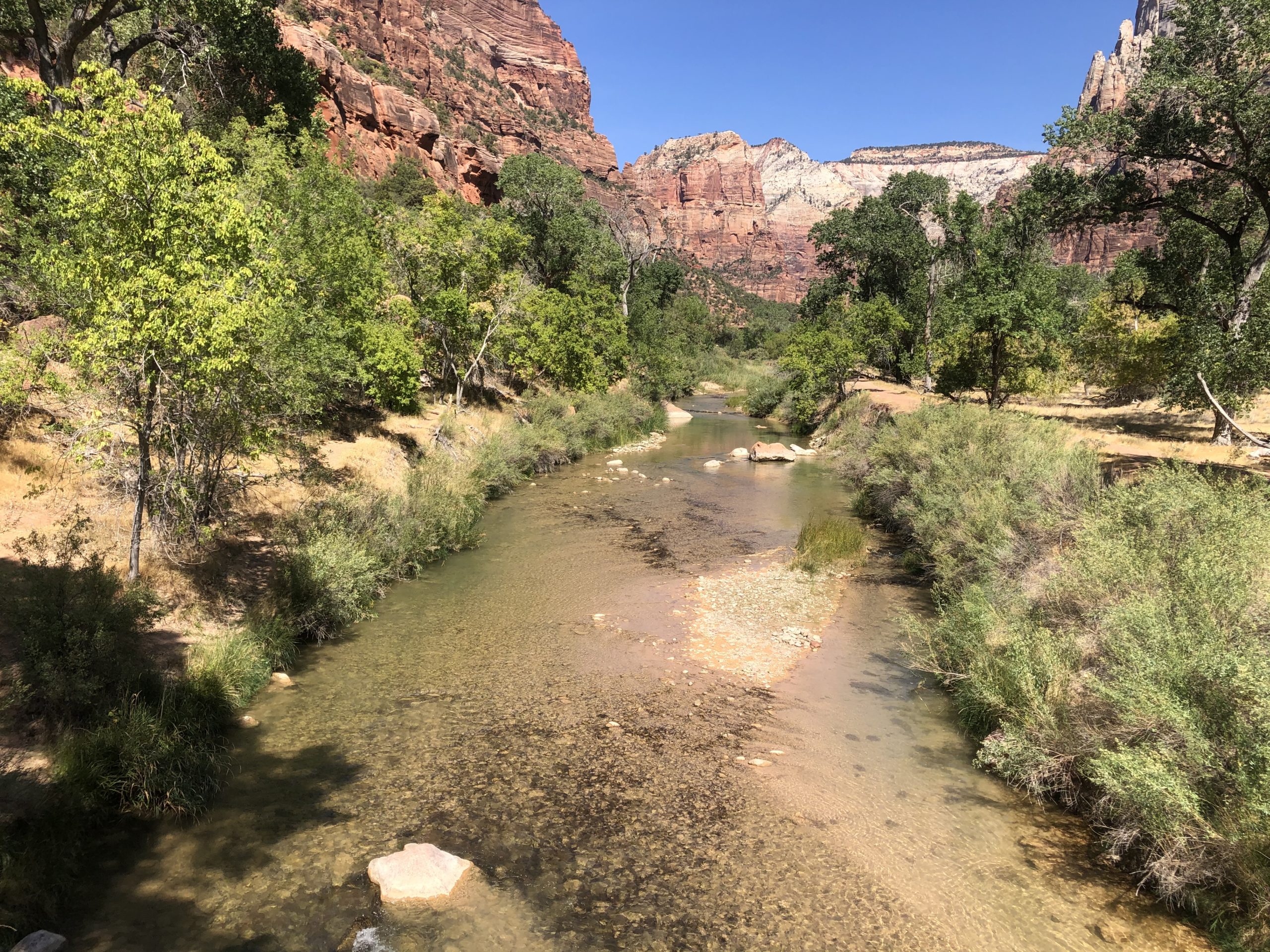ST. GEORGE — A danger advisory remains in effect for the North Fork of the Virgin River due to the continuing presence of dangerously high levels of toxic cyanobacteria.

The National Park Service and Utah Division of Water Quality released findings in late September indicating that the Virgin River in Zion National Park south of the Rockville bridge contained toxins well above safe levels.
Taylor Creek, LaVerkin Creek and North Creek, which also tie into the North Fork of the Virgin River, have also tested positive for dangerous levels of the bacteria and resulting toxins.
“September results from the North Fork of the Virgin River indicates that we are still in a danger advisory with levels in excess of 550 parts per billion (ppb) for a potent neurotoxin, anatoxin-a, under this exposure scenario,” Robyn Henderek, a physical scientist with the NPS, told St. George News in an email.
Utah’s risk thresholds for issuing a warning advisory for anatoxin-a is 15 ppb, Henderek said. Exposure to this level of the toxin can cause long-term illness. The state issues a danger advisory once toxin levels reach 90 ppb, at which it becomes capable of acute poisoning.
The bacteria and associated toxins are being produced by algal blooms in the Virgin River in Zion National Park. While a natural part of the environment at low levels, once an algal bloom appears in high concentrations, it can prove harmful to both humans and animals.

The toxin bloom was detected in July following the death of a Husky puppy that played in the Virgin River while its owners visited the park. The dog died within an hour of coming into contact with the river.
A recent incident involving a lost California hiker in Zion National Park possibly drinking Virgin River water to survive renewed a level of interest in what the toxin level in the river was and if there had been any change.
National Park Service and state officials have been testing the Virgin River monthly to see how far the toxin has spread. As of Sept. 15, it has reached south of the park to Rockville. Tests beyond that point have not detected signs of the cyanobacteria toxins.
Results on the latest round of testing may be available by mid-November, Henderek said.
Since the discovery of the toxic algal blooms, park officials have placed signs throughout the park warning visitors to stay away from the river, which includes hiking through the Narrows.

The bacteria can be absorbed through the eyes, nose or mouth, according to the Utah Division of Water Quality. An individual who is exposed can experience symptoms of skin rash, salivation, drowsiness, tingling, burning, numbness, pain, incoherent speech, muscle contractions or twitching, vomiting and diarrhea.
Children are particularly vulnerable to cyanobacteria, and it is extremely dangerous and likely fatal for dogs. According to officials, exposure to the bacteria can kill a dog within 15 minutes.
Outside of Zion National Park, the Southwest Utah Public Health Department continues to monitor the situation and has issued a health warning for the public, along with the following guidelines:
- Do not swim in the signed area.
- Avoid areas of algae scum.
- Keep animals away.
- Do not ingest the water.
- Clean fish well and discard guts.
The health department warning does not apply to Quail Creek Reservoir, Sand Hollow Reservoir or the Santa Clara River basin.

The health department has not encountered any cyanobacteria poisoning incidents involving humans, David Heaton, a spokesman for the health department, told St. George News.
For the time being, the algal blooms remain in the Virgin River and continue to pose a health risk to humans and animals. While a good flooding event through the river may be able to break up the algae, there is a possibility the bloom could return once the flooding has subsided, Henderek said. The same applies for snow runoff from the mountains.
There is also no known treatment for the algal blooms that wouldn’t have an adverse effect on the Virgin Rivers’ native aquatic species, Henderek said.
Copyright St. George News, SaintGeorgeUtah.com LLC, 2020, all rights reserved.